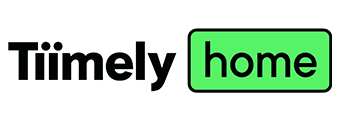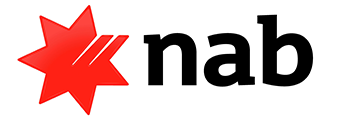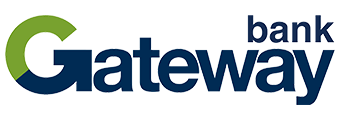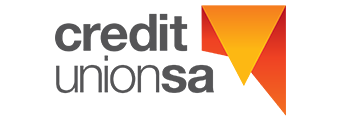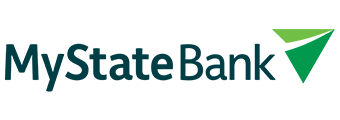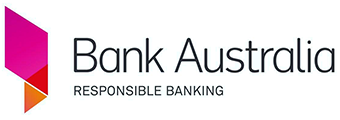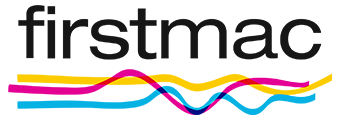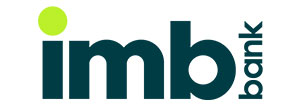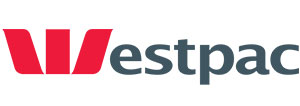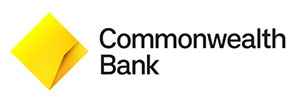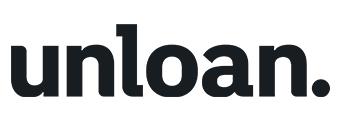| Lender | Home Loan | Interest Rate | Comparison Rate* | Monthly Repayment | Repayment type | Rate Type | Offset | Redraw | Ongoing Fees | Upfront Fees | Max LVR | Lump Sum Repayment | Additional Repayments | Split Loan Option | Tags | Row Tags | Features | Link | Compare | Promoted Product | Disclosure |
|---|---|---|---|---|---|---|---|---|---|---|---|---|---|---|---|---|---|---|---|---|---|
5.79% p.a. | 5.83% p.a. | $2,931 | Principal & Interest | Variable | $0 | $530 | 90% |
| Promoted | Disclosure | |||||||||||
5.84% p.a. | 5.86% p.a. | $2,947 | Principal & Interest | Variable | $0 | $250 | 60% |
| Promoted | Disclosure | |||||||||||
5.49% p.a. | 5.69% p.a. | $2,836 | Principal & Interest | Variable | $null | $null | 60% |
| Promoted | Disclosure | |||||||||||
5.74% p.a. | 5.65% p.a. | $2,915 | Principal & Interest | Variable | $0 | $0 | 80% |
| Disclosure | ||||||||||||
5.74% p.a. | 6.19% p.a. | $2,915 | Principal & Interest | Variable | $0 | $530 | 90% |
| Disclosure | ||||||||||||
5.79% p.a. | 5.82% p.a. | $2,931 | Principal & Interest | Variable | $0 | $799 | 70% | ||||||||||||||
5.89% p.a. | 6.02% p.a. | $2,962 | Principal & Interest | Variable | $10 | $220 | 80% | ||||||||||||||
5.89% p.a. | 6.13% p.a. | $2,962 | Principal & Interest | Variable | $250 | $250 | 80% | Disclosure | |||||||||||||
5.89% p.a. | 5.91% p.a. | $2,962 | Principal & Interest | Variable | $0 | $350 | 60% | ||||||||||||||
5.92% p.a. | 5.95% p.a. | $2,972 | Principal & Interest | Variable | $null | $325 | 70% | ||||||||||||||
5.94% p.a. | 6.00% p.a. | $2,978 | Principal & Interest | Variable | $0 | $835 | 70% | ||||||||||||||
5.79% p.a. | 5.80% p.a. | $2,931 | Principal & Interest | Variable | $0 | $0 | 90% | ||||||||||||||
6.04% p.a. | 6.26% p.a. | $3,011 | Principal & Interest | Variable | $15 | $784 | 80% | ||||||||||||||
6.04% p.a. | 6.07% p.a. | $3,011 | Principal & Interest | Variable | $0 | $845 | 90% | ||||||||||||||
5.89% p.a. | 6.18% p.a. | $2,962 | Principal & Interest | Variable | $299 | $350 | 80% | ||||||||||||||
6.54% p.a. | 6.92% p.a. | $3,174 | Principal & Interest | Variable | $0 | $0 | 90% | ||||||||||||||
6.59% p.a. | 6.59% p.a. | $3,190 | Principal & Interest | Variable | $0 | $0 | 97% | ||||||||||||||
6.74% p.a. | 6.82% p.a. | $3,240 | Principal & Interest | Variable | $8 | $350 | 80% | ||||||||||||||
7.39% p.a. | 7.39% p.a. | $3,458 | Principal & Interest | Variable | $0 | $160 | 95% |
Best April Variable Rate Home Loans
Aussie borrowers have long been partial to variable home loan rates – a trend that’s unlikely to falter in the wake of RBA cash rate cuts.
Variable home loan rates allow borrowers to enjoy the benefits of rate cuts, taking the pressure off the budget of long-suffering homeowners. But not all variable rates are made equal.
Here are some of the most competitive variable rate home loans in our database right now, no matter your current loan-to-value ratio (LVR).
| LVR | Brand | Product | Interest rate (p.a.) | Comparison rate* (p.a.) |
|---|---|---|---|---|
| ≤60% | Australian Mutual Bank | GumLeaf Owner Occupied Variable Basic Rate | 5.64% | 5.71% |
| ≤70% | Australian Unity | Kick Starter Discounted Variable Home Loan | 5.69% | 5.69% |
| ≤80% | Bank of China | Discount Plus Home Loan | 5.68% | 6.06% |
| ≤90% | loans.com.au | Solar Home Loan | 5.74% | 6.19% |
| ≤95% | Community First Bank | Basic Variable Home Loan | 5.74% | 5.79% |
Rates correct as of 1 April. Rates may differ to comparison table above.
What is a variable home loan interest rate?
Lenders charge borrowers interest for providing the funds to buy a property, and the amount of interest charged depends on the interest rate. That’s where the type of interest rate can play a key role.
Variable rates can fluctuate over the weeks, months, and years a person holds their home loan.
Interest rate fluctuations can happen at any time but generally occur alongside changes to Australia’s official cash rate. If the cash rate falls, it’s likely that a lender will drop home loan interest rates, and if the official cash rate is hiked, lenders' interest rates will probably follow.
Variable rate home loans can be more difficult to budget for than fixed rate home loans as borrowers need to take into account potential rate rises or falls, which will impact the size of their repayments.
However, variable rate home loans also typically offer many benefits that their fixed rate counterparts do not.
Why choose a variable rate home loan?
In Australia, variable rate home loans tend to be more popular than fixed rate home loans.
That might be because they offer more flexibility.
Variable rate home loans tend to offer features such as redraw facilities, offset accounts, and the ability to make extra repayments as standard. Fixed rate home loans, on the other hand, generally don’t allow for such benefits.
Variable rate home loans can also be more appealing during times of high interest rates. That’s because, when rates are high, it’s generally expected that they will fall. A person fixing their interest rate won’t be able to take advantage of falling rates, while a variable rate borrower could hope to see their repayments shrink.
How to compare variable mortgage interest rates
Comparing variable rate home loans on Your Mortgage is as easy as perusing our comparison tables.
For the most part, a borrower would be best to find the lowest rate home loan that they’re eligible for. However, there are other factors you might want to consider when determining if a low-rate home loan is actually a good deal, including:
The comparison rate
A home loan’s comparison rate reflects its ‘true cost’. That is, how much it costs a borrower in an average year, considering both the interest charged and any additional fees.
The comparison rate is calculated by considering the overall cost of a $150,000 home loan over a 25-year span.
While it is easy to point out which home loans have the lowest variable rate, it is still crucial to take note of the comparison rate. After all, what’s the point of a low rate if you’re getting slugged by fees?
Features and benefits
Another aspect worth contemplating is whether you would like access to any special features. If you have a hoard of spare cash, for instance, you might find benefit in an offset account.
Or, if you’re considering installing solar panels, it might be worth looking for a home loan that gives discounted rates for environmentally friendly homes.
Features of variable rate home loans
A variable rate home loan is a flexible mortgage option.
Lenders can reprice variable interest rates when they need to. Perhaps that’s why many offer some notable features exclusively to their variable rate borrowers.
Features that are routinely found on variable rate home loans, that aren’t so common on fixed rate home loans, include:
- Ability to make unlimited extra repayments
- The option to set up an offset account
- The ability to freely redraw extra repayments made previously
- The ability to refinance with relative ease
Frequently Asked Questions
Here are the answers to some of the most frequently asked questions on variable rate home loan rates.
While it might seem daunting to sign onto a home loan product with a 30-year lifespan, you’re not stuck with it once you do.
If you have a variable rate home loan and wish to change it to a fixed rate home loan, there’s very little stopping you. The steps to refinancing successfully are notably simple, particularly if you’re on a variable rate to start with.
Refinancing from a fixed rate home loan is generally a bit trickier. Lenders often charge borrowers ending a fixed rate agreement early extra fees, called break fees. That’s because they stand to lose an income stream they had been promised earlier.
Still, it is possible to refinance a fixed rate home loan. Though, one must ensure to weigh up the pros and cons carefully.
Variable mortgage rates are subject to change at any given time. Though, lenders must give a borrower a certain amount of notice before increasing their rate, and most lenders commit to telling a borrower at least 20 days in advance.
Typically, variable interest rates shift in line with the Reserve Bank of Australia (RBA) cash rate. So, if the cash rate is being hiked or cut regularly, variable home loan rates will likely be doing the same. The RBA board meets once every six weeks, approximately, to contemplate whether or not to change the cash rate.
Yes. The ability to pay off a home loan early is one of the advantages to having a variable interest rate.
Variable rate home loans generally allow a borrower to make unlimited extra repayments. By paying more than you need to, you could potentially save thousands in interest and shorten the life of your home loan.
Fixed rate home loans, on the other hand, might limit how many extra repayments a person can make and penalise borrowers who surpass such limits.
How advertised variable interest rates compare to advertised fixed interest rates at any given time tends to depend on the official cash rate and whether lenders expect it to rise or fall in the near-term future.
If a lender anticipates the cash rate will rise in the coming months or years, it will generally price its fixed rate lineup higher than its variable rate line up. If if thinks the opposite, it will probably price its fixed rate offers lower than its variable rate offers.
Whether the best interest rate option for you is fixed or variable will depend entirely on your own circumstances and risk tolerance.
If you couldn’t manage your repayments if your interest rate were to go up, a fixed rate is likely your best option. You might also be more inclined to fix your rate if you think interest rates will rise in the near future or you like the surety of knowing what your repayments will be in the weeks, months, and years to come.
On the other hand, if you intend to refinance in the near future, plan to make extra repayments, want access to additional mortgage features, or believe interest rates will fall, a variable rate is probably your best option.

Get help finding
the right home loan
Not sure which type of loan is best for your needs?
Your Mortgage can help you find out.









